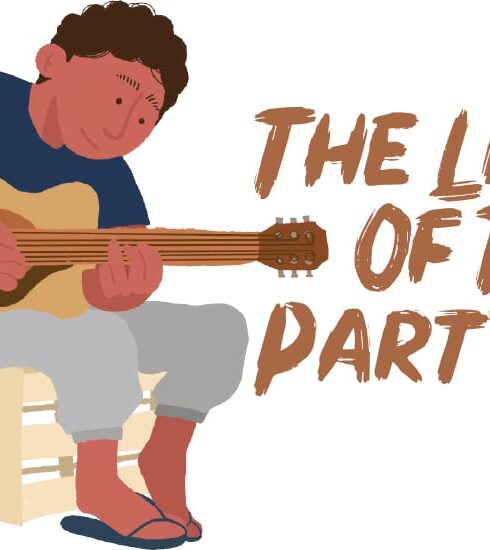Polycurious – the rise of Ethical Non-Monogamy
When I tell people I’m polyamorous, the reaction is usually one of two things. Either they think I’m having wild sex orgies and swinging parties on the daily, or they think I’m a sister-wife in some fundamentalist religious cult.
For the record, neither is true. And polyamory, or ethical non-monogamy, is definitely on the rise. But what exactly is it?
Ethical non-monogamy (ENM) is an umbrella term for a lifestyle or relationship type which doesn’t revolve around two people in a closed, monogamous romantic and sexual partnership. ENM can and does look like almost anything, but always involves openness, planning, and communication. Nothing sexier than a planner, amirite? The key to a successful polyamorous relationship is making sure everyone knows who’s doing what to whom and when, has agreed to it beforehand, and knows the ‘rules’ of what’s acceptable and what isn’t.
ENM is often still categorised as a fetish or kink, and in some cases it most definitely is. Swinger parties, kink clubs and threesomes all fit under the broad category of ENM. But equally, you might come across a small polycule living in quiet domestic bliss, sharing chores and childcare as well as beds.
Polyamory and open relationships seem to be increasing in popularity as people move away from traditional or religious notions of what a relationship should be and start to explore how to best make things work for them. For some people, that might just mean opening their marriage for casual sex on the side, while for others it might be finding a long-term partner alongside their marriage.
Some of the more common terms to describe ENM include:
Closed group marriage: More than two people living together in an exclusive, marriage-like arrangement.
DADT: Don’t ask, don’t tell – both partners in a relationship are allowed to date casually/fuck outside the relationship as long as the other partner doesn’t have to hear about it or meet them.
Hinge: A three-person relationship where one person dates the other two, but they don’t date each other.
Kitchen Table Poly: A style of polyamory where everyone is connected as a family even if individuals aren’t all dating each other.
Metamour: Your partner’s partner, who you aren’t in any kind of relationship with.
Nesting partner: A partner that you live with. May be married or unmarried. Usually a primary partner.
New Relationship Energy: NRE refers to the surge of happy sexy feelings you get when you meet someone new and get the horn for them.
NSA: Common outside polyamory as well, this refers to a no strings attached sexual encounter.
One Penis Policy: When a man is allowed to have multiple female partners, and they can sleep with other women but not other men.
One Vagina Policy: Where a woman is allowed to sleep with multiple men, but they are not allowed to have other female partners.
Open marriage: Two people who are married but date outside the marriage. This could be NSA, or longer term dating, or swinging, or many other variations.
Polycule: A romantic network where the members are closely connected, even if they aren’t all sleeping together or dating.
Queer Platonic Partnership: More intense than a friendship, less intense than a romantic relationship. Sometimes involves close friends choosing to live together and raise a family together, but doesn’t usually involve romance or sex.
Safe Sex Circle: A group of people, some or all of whom are sleeping with each other, who have agreed not to have sex outside the circle and can therefore ‘exchange bodily fluids’ without risk of STIs.
Secondary: Someone who is in a relationship with someone else who already has a primary or nesting partner. Secondaries usually have lower priority in terms of time and energy, often because they are not living with the person, who may have a nesting partner.
Solo Poly: A person who may or may not be in any relationship or sexual partnership, but has decided not to date monogamously. Solo Poly people generally don’t want to live with a partner, and are often happy being someone’s secondary partner.
Swinging: Someone in a marriage or similar partnership where both partners enjoy sex with other couples with an emphasis on sexual pleasure rather than emotional connectedness.
Triad: A romantic and/or sexual relationship where all three partners are involved with each other.
A common and dismissive phrase in the ENM world is “unicorn” and “unicorn hunters”. If you’ve ever been on lesbian dating apps, you’ll have seen these people. The profile usually says something like “Happily married couple in an open relationship seeks an open-minded woman for NSA fun.” They almost never have real photos of themselves. It’s known as unicorn hunting, because the couple is looking for a likely mythical creature – a bisexual woman who is going to be equally sexually attracted to both partners.
While this may seem like a natural fit under the ENM umbrella, a lot of Poly people frown on unicorn hunting, as the couple are often treating the third person as more of a sex toy than a person, and holding unrealistic expectations for them without really considering their needs.
For me, solo poly means I am free to explore flirtations and attractions without the need to tie myself to any one person. Personally, I don’t experience jealousy, so I have no problem with someone I’m seeing, also seeing someone else.
ENM is not something to enter into lightly, and you need to be sure about what your boundaries are, at least initially. It can be the making of a relationship, and also the breaking of it. If nothing else, it’s a more interesting chat starter than “hey how’s your day going?” next time you get a match on Tinder.
While ENM might not be for everyone, it’s worth doing some reading and exploring with an open mind. You might just discover a whole new world of possibilities…




